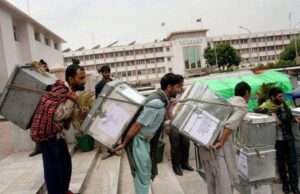Just 14 kilometres from Srinagar, many families are busy in cultivating the indigenous crocus flower planted in the Pampore area of south Kashmir over thousands of hectares. Harvesters, mostly women, carefully pick the red saffron threads which get sold around the world for a very high price.
For districts, namely Budgam, Pulwama, Kishtwar and Srinagar grow saffron in Jammu and Kashmir. Out of these four, Pampore in Pulwama has earned the title of Kashmir’s “Saffron town” as it grows the best quality of saffron. The soil quality in this region is perfect for the growth of saffron. It produces the well-known “Kashmiri saffron” which is famous for its colour, aroma and medicinal value. Also Read – Apple production down in Kashmir this year due to fake pesticides
The saffron cultivation employs around 30,000 families in the Pampore Area. A higher concentration of crocin makes up for the high-quality of saffron. The crocin content in Kashmiri saffron is 8.72% which is quite higher than its Iranian counterpart in which it is only 6.82%.
The saffron farming sector employs around 11,000 women which is half of the workforce. The role of the saffron is to separate the delicate saffron thread from the flower. Each thread must be picked from the flower properly and each contains three threads. The process then involves spreading these threads evenly on a white cloth to dry in the sunlight. Then, in order to prevent rotting, the saffron strands are then kept in a cotton cloth to avoid rotting and moisture. This whole process is done by women. Also Read: Kashmir apple helpline set up for farmers amod COVID-19
For the past eight to nine decades, families in these regions have grown saffron and the financial return has helped them to meet the daily expenditures as well as build their houses or marry their children. But climate change in the recent past has hit the production and consequently, income of these farmers. The Department of Agriculture Kashmir states that the production of the Kashmiri saffron has declined to 5.6 metric tons from 16 metric tons two decades earlier. Also Read – Director Horticulture Kashmir plants fruit trees in Anganwadi Centre
As a result of this decreasing production, many farmers have shifted to other crops like apples and walnuts. The area under saffron cultivation has also shrunken to 5,707 hectares in 1996 to 3,875 hectares in 2010-11.



